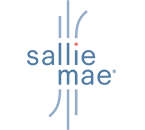NASFAA National Conference Concludes With Call to Action, Inside the Beltway Rundown
By Allie Bidwell, Communications Staff
The future and value of a higher education has been challenged recently, and financial aid administrators will play a large role in continuing to advocate for the importance of a postsecondary education –– and for the students who choose to pursue that path.
That was the message Billie Jo Hamilton, the newly-initiated 2017-18 NASFAA National Chair, passed along to the more than 2,000 financial aid professionals gathered at this year’s National Conference.
“I know that as committed financial aid professionals, whatever comes our way, we will rise to the challenges as we have done for over 50 years,” Hamilton said. “One of the things I look forward to this year is meeting those of you who have also found your passion, and learning from and being energized by your commitment to our profession.”
Moving forward, Hamilton highlighted NASFAA’s recent restructuring of the organization’s board and committees, and how the more flexible nature of task forces allows NASFAA’s leaders and members to be more “nimble and able” to respond to challenges in the current, often unpredictable political environment.
“When the unexpected pops up,” Hamilton said, “you can be confident that NASFAA will be on it.”
Following Hamilton’s speech, NASFAA President Justin Draeger and Vice President of Policy and Federal Relations Megan Coval provided attendees with a glimpse into the current landscape of the nation’s capital.
“DC always has been and will be a circus because that is the nature of politics,” Draeger said. “Politics is the art of persuasion. Any time you have politics on display, you're bound to see some things you wouldn't normally see on Main Street, USA. We accept that for what it is, but we have to sift through what is just being thrown out to persuade, and what is reality.”
Draeger went on to explain that for the first time since 2010, there is a unified federal government, with the Republican party in control of the White House, as well as both chambers of Congress. Typically the united government would allow for more rapid movement toward policy goals, but with a new administration it may take more time for the party to come together and establish priorities.
But the Trump administration and Republican leaders have identified five areas they intend to focus on, including: healthcare repeal, tax reform, immigration, Obama-era regulation repeal, and infrastructure.
While those areas do not directly relate to higher education, it could still have an impact in a few other ways, Draeger said. Primarily, while Republicans in Congress and the Trump administration are focusing on making progress through their agenda, there’s not much room to move on other policy areas.
“Before we get to higher education, which is not on the list, we have to get through health care,” Draeger said. “And health care is nowhere near to being finished.”
Still, a few of these issues may have tangential impacts on higher education. With health care, federal cuts to Medicaid could have a ripple effect. Typically with federal cuts to programs like Medicaid, states work to make up the difference. However, when states increase health care spending, state funding for public higher education is often on the chopping block.
When lawmakers begin to tackle tax reform, higher education tax credits and deductions will be on the docket, Draeger said.
“Those are definitely on the list to either be reworked, or in some cases eliminated,” Draeger said. “This is going to be new territory for us. We don't award tax credits or deductions, but they are part of the totality of financial aid and college affordability.”
Outside of Congress, it’s still unclear where exactly the Department of Education is moving in terms of a higher education agenda. Without a clear path forward, it’s possible that Congress could take the lead on higher education, at least through the reauthorization of the Higher Education Act.
The Trump administration has, however, published a fiscal year 2018 budget proposal that contains significant cuts to federal student aid programs. Draeger said this September may be the month to keep an eye on any movement with the federal budget. Congress each year needs to pass an appropriations bill in September to fund government operations after October 1. Although Congress may very likely just pass a Continuing Resolution rather than a full budget deal, Draeger said it will be important to pay attention to what else might get attached to a funding bill.
The financial aid community should also be wary of the debt ceiling, which if reached, would create a cash flow problem. At that point, Treasury would have to make choices between which programs to fund, possibly resulting in harm to student aid programs.
With a busy few months ahead, Coval explained to members how they can stay involved in the process and advocate for students and financial aid programs. NASFAA has been trying to take a more proactive approach to advocacy by keeping close watch over which topics are gaining traction among lawmakers and taking the time to decide on a position and create an advocacy plan for certain issues.
“We take the temperature of what's going on on Capitol Hill … and anticipate some of the things coming down the pike,” Coval said. “We know those ideas are out there, but we have some time to wrap our heads around those issues and figure out where we are as a community. When something does bubble up, we are locked and ready to give recommendations.”
Coval encouraged members to volunteer to join task forces at NASFAA, participate in the Advocacy Pipeline, and keep in contact with their representatives.
Publication Date: 6/29/2017












You must be logged in to comment on this page.